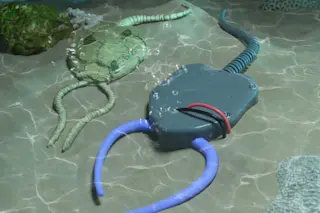An early Amazon delivery drone prototype. (Credit: Amazon) As the drone industry continues to gain momentum in the United States, some big-name companies are vying to rule the skies. On Tuesday, Amazon — the company that wants drones to deliver goods within 30 minutes of placing an order — unveiled a bold plan to carve out a chunk of airspace that would serve as a fast lane for commercial drones. Amazon’s experts believe this is the best way to accommodate tens of thousands of drones that will be buzzing over our heads in the coming decade.
Amazon’s aeronautics experts presented their plan at a NASA convention in California aimed at generating novel ideas for managing drone traffic as more and more unmanned systems inevitably take to the skies. Amazon’s plan, outlined in two new papers, would allot airspace for high- and low-speed traffic. Slower drones not equipped with sophisticated navigation ...














